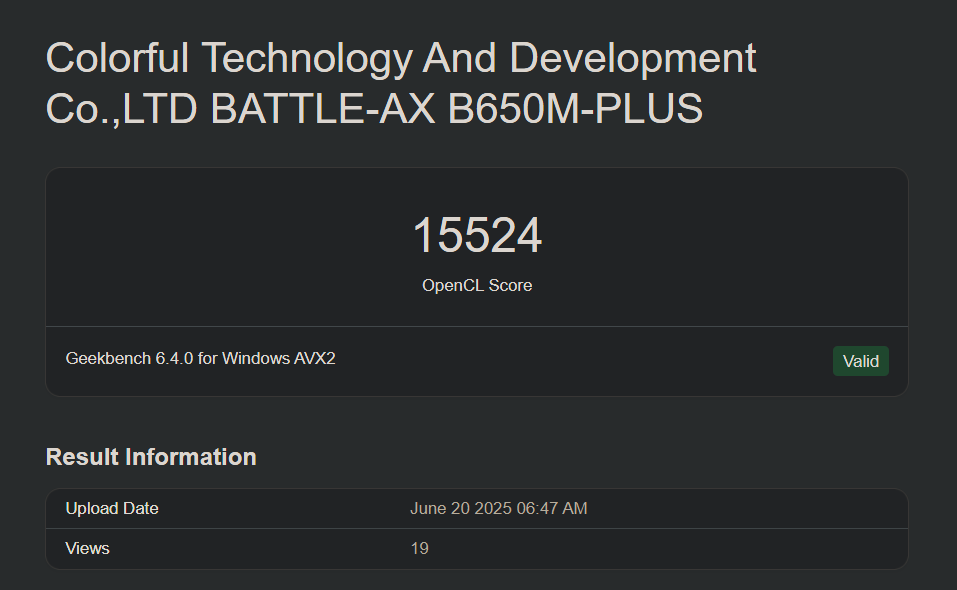
The first traces of the Lisuan G100, remarked as China's first domestically produced 6nm GPU, have surfaced on Geekbench. In an OpenCL benchmark, the G100 is accompanied by an AMD Ryzen APU in Windows 10, though the performance isn't remarkable. Since this is an early result from developing drivers and silicon, we shouldn't consider this single benchmark as reflective of the GPU's potential performance.
Lisuan Technology announced the power-on of its G100 GPU last month. Based on their in-house TrueGPU architecture, it is manufactured using a 6nm-grade process, likely from SMIC. The G100 is claimed to offer performance comparable to Nvidia's budget RTX 4060, which has now been superseded by the RTX 5060. Exact specifications were not revealed, but the Geekbench listing indicates 32 Compute Units, 256MB of VRAM, and a 300 MHz clock speed, at least for this respective benchmark. If the specifications are accurate, this is an entry-level SKU, which could explain the graphics card's relatively low performance.
It's impossible to determine the number of FP32 units since we are not aware of how the GPU's execution unit subsystem is configured. In addition, the 256MB figure is likely a driver misreport, while the low clock speed probably stems from the firmware/driver or the silicon itself. The takeaway is that we cannot form a judgment based on the GPU's current state.

The test bench features a Ryzen 7 8700G alongside 64GB of DDR5-4800 memory atop the Colorful Battle-AX B650M-Plus motherboard. With this setup, the Lisuan G100 scored 15,524 points in OpenCL, ranking it among the slowest GPUs in Geekbench's public repository. GPUs with similar results include the 13-year-old GTX 660 Ti, Samsung's Xclipse 940 on the Exynos 2400, which is a mobile SoC, and the Radeon R9 370 (GCN 1.0).
Lisuan Technology says the first G100 chips have powered on, and this benchmark further proves their claims. The GPU has likely achieved tape-out and is believed to be in the process of risk production. Mass production is anticipated to begin late this year or early next year. That being said, significant progress is still required to reach usable performance and stability levels.
Moore Threads, which is also an indigenous GPU manufacturer, struggles with similar driver problems, not to mention issues with game optimizations. As Intel's Arc has proven, achieving a stable and robust GPU ecosystem, particularly for gaming, is a significant uphill battle for newcomers. We can expect to learn more from the company as development advances.
Follow Tom's Hardware on Google News to get our up-to-date news, analysis, and reviews in your feeds. Make sure to click the Follow button.







